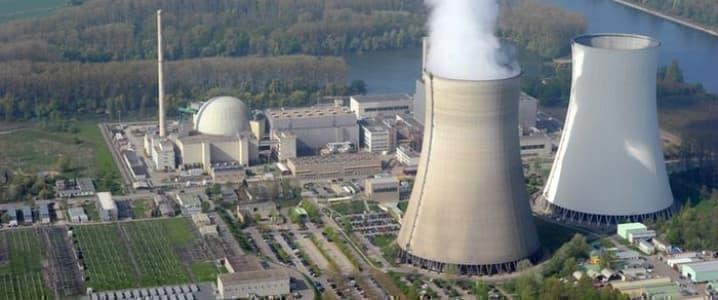The Unexpected Consequences Of Germany’s Anti-Nuclear Push
Authored by Irina Slav via OilPrice.com,
Germany, the poster child for renewable energy, sourcing close to half of its electricity from renewable sources, plans to close all of its nuclear power plants by 2022. Its coal-fired plants, meanwhile, will be operating until 2038. According to a study from the U.S. non-profit National Bureau of Economic Research, Germany is paying dearly for this nuclear phase-out–with human lives.
The study looked at electricity generation data between 2011 and 2017 to assess the costs and benefits of the nuclear phase-out, which was triggered by the Fukushima disaster in 2011 and which to this day enjoys the support of all parliamentary powers in Europe’s largest economy. It just so happens that some costs may be higher than anticipated.
The shutting down of nuclear plants naturally requires the replacement of this capacity with something else. Despite its reputation as a leader in solar and wind, Germany has had to resort to more natural gas-powered generation and, quite importantly, more coal generation. As of mid-2019, coal accounted for almost 30 percent of Germany’s energy mix, with nuclear at 13.1 percent and gas at 9.3 percent.
The authors of the NBER study have calculated that “the social cost of the phase-out to German producers and consumers is $12 billion per year (2017 USD). The vast majority of these costs fall on consumers.”
But what are these social costs–exactly?
“Specifically,” the authors wrote, “over 70% of the cost of the nuclear phase-out is due to the increased mortality risk from local air pollution exposure as a consequence of producing electricity by burning fossil fuels rather than utilizing nuclear sources.”
The culprit is coal. According to the study, some 1,100 people die because of the pollution from coal power generation every year. This, the authors say, is a lot worse than even the most pessimistic cost estimates of so-called “nuclear accident risk” and not just that: 1,100 deaths annually from coal-related pollution is worse even when you include the costs of nuclear waste disposal in the equation.
The results of the study, which used machine learning to analyze the data, surprised the authors. The cost of human lives had not been expected to be the largest cost associated with the nuclear phase-out.
“Despite this, most of the discussion of the phase-out, both at the time and since, has focused on electricity prices and carbon emissions – air pollution has been a second order consideration at best,” one of the authors, economist Steven Jarvis, told Forbes.
Just two decades ago, air pollution was a top concern for many environmentalists. Now, carbon emissions and their effect on climate seem to have taken over the environmental narrative and, as the research from NBER suggests, this is leading to neglecting important issues. Meanwhile, there are voices—and some of them are authoritative voices—that are warning a full transition to a zero-emission economy is impossible without nuclear power, which is virtually emission-free once a plant begins operating.
None other than the International Energy Agency—a staunch supporter of renewables—said in a report last year that the phase-out of nuclear capacity not just in Germany but everywhere could end up costing more than just increased carbon emissions as the shortfall in electricity output would need to be filled with fossil fuel generation capacity, just like it is filled in Germany.
Why can’t renewables fill the gap? Here’s what the IEA had to say:
“If other low-carbon sources, namely wind and solar PV, are to fill the shortfall in nuclear, their deployment would have to accelerate to an unprecedented level. In the past 20 years, wind and solar PV capacity has increased by about 580 gigawatts in advanced economies. But over the next 20 years, nearly five times that amount would need to be added. Such a drastic increase in renewable power generation would create serious challenges in integrating the new sources into the broader energy system.”
Translation: we are not adding wind and solar fast enough and we can never add them fast enough without risking a grid meltdown.
Even Germany’s fellow EU members recognize the importance of nuclear power. Leaving aside France, where it is the single largest source of energy, accounting for 60 percent of electricity generation, the EU members agreed in December to include nuclear power in their comprehensive climate change fighting plan, which the union voted on at the end of the year.
“Nuclear energy is clean energy,” the Czech Prime Minister, Andrej Babis, said at the time. “I don’t know why people have a problem with this.”
The reason so many people have a problem with nuclear is, of course, obvious. Actually, there are two reasons: Chernobyl and Fukushima. One might reasonably argue that two accidents for all the years nuclear power has been used for peaceful purposes by dozens of nuclear plants make the risk of a full meltdown a small one, but statistics is one thing–fear is an entirely different matter.
The problem with nuclear plants, in most opponents’ minds, is that a meltdown may be rare, but when it does happen, it is far more disastrous than a blackout caused by a slump in solar energy production, for example.
There is no way to remove the risk of a nuclear reactor meltdown entirely. Reactor makers are perfecting their technology, enhancing safety features, and making sure the risk will be minimal, but the risk remains, deterring politicians–those in the ultimate decision-making position–to make a pragmatic decision that, as the NBER research suggests, could actually save lives.
Tyler Durden
Sun, 01/19/2020 – 08:10
via ZeroHedge News https://ift.tt/37aiVzp Tyler Durden
